More consumers than ever are thinking about their environmental impact when they shop, considering sustainability alongside driving factors like convenience and even price when comparing similar offerings. Electric vehicles (EVs), biodegradable products, and items crafted from organic materials have enabled customers to drastically reduce their individual carbon footprints without sacrificing quality. However, as more companies follow the money and hype up the eco-friendliness of their offerings, consumers are becoming wary of “greenwashing”— using misleading marketing tactics to project an environmentally conscious image onto a product or service that doesn’t actually help the environment. It’s a big trust problem for consumers, and it’s a huge PR problem for green companies.
When real eco-responsible companies with real sustainability stories have to compete amidst deceptive green-pandering marketing strategies, they are easily tarred with the same brush. So how do marketers and PR professionals cut through the clamor of green-washed lip service to convince eco-savvy customers that their mission matters?
There are actionable steps marketers can take to connect with eco-conscious consumers despite their cynicism, and it all boils down to strong messaging.
What Is Greenwashing?
While greenwashing might sound clean, it’s actually a dirty marketing tactic. Greenwashing happens when a business spends more time and money on marketing themselves as an eco-conscious corporation than on reducing their impact on the environment. It’s a deceptive gimmick designed to attract and obtain customers who prefer to buy sustainable products and services from environmentally friendly brands.
Greenwashing as a marketing gimmick has been around for years. In the mid-1980s, the oil tycoon Chevron launched an expensive print and TV ad campaign to showcase its environmental dedication. However, as their notorious “The People Do” advertising series ran, Chevron was actively breaching the Clean Water Act, the Clean Air Act, and dumping oil into wildlife refuges.
The act of greenwashing not only destroys consumer trust but also hurts a brand’s reputation and could cost them millions. In February 2017, Walmart paid $1 million to settle claims of greenwashing in California. America’s largest retailer was accused of selling plastics that were misleadingly peddled as environmentally sound.
In such a fallacious landscape, how can purpose-driven brands that actually advocate sustainability build trust with doubtful customers? It all comes down to show-don’t-tell media relation campaigns.
Green Marketing Strategies that Won’t Greenwash
According to the recent Nielsen’s Global Sustainability Report, more than 66% of customers would buy a more expensive product if it came from a sustainable brand. This figure jumps to almost two-thirds among Millennials.
Savvy marketers and public relations professionals can tap into this desire for sustainability by utilizing smart strategies that spotlight a brand’s eco-conscious mission through actions rather than exposition.
There are seven marketing best practices that we use to ensure that the sustainability stories of the brands we represent are heard loud and clear.
1. Highlight the facts. You can’t greenwash solid facts and figures. Whether a business develops a dedicated page to inform potential customers about their green movement efforts or showcases their actions in a sustainability magazine, using data will show the authenticity of a brand’s eco endeavor.
Timberland dedicated an entire page of their website to highlight their responsibility as “Earthkeepers.” They clearly display how many hours their employees have donated, how many plastic bottles they’ve recycled, and how many trees they’ve planted.
2. Keep an eye on your optics. Don’t be so laser focused on marketing and what you say about yourself that you forget what your own actions are saying for you. Brands that are part of the green market need to take a holistic approach to their business model. When a restaurant touts their sustainable, organic food but serves it in non-recyclable plastic packaging, their actions put the lie to their words. Look at your brand from the perspective of an outsider — that’s what PR professionals do for their clients. Is there something misaligned between what you say and what you do that could be confusing to a consumer? Search out your own inconsistencies, and look for the visible signs of your business’s values put into practice.
3. Get specific with your language. Clarity and precision in your messaging is everything when it comes to an effective green marketing campaign. Brands need to cut out the fluff and avoid using words and terminology that have no clear meaning, or that have been rendered meaningless from overuse in a green-happy marketing landscape with big promises and little substance. Rather than falling back to the industry jargon that the average consumer won’t understand, a PR professional should help translate your messaging to be crystal clear.
4. Offer transparency early and often. Accusations of greenwashing arise when brands trend-hunt and make false claims to appear more sustainable. Tell your consumers exactly how and why your offering is sustainable before they ask you to prove it, because they won’t ask — they’ll assume insincerity first. Consumers who care about the environment often need help interpreting and understanding the impact of their purchases. Make it easy on them by clearly articulating how your offering supports a sustainable mission. Show them how and where your products are made, what materials are used, and how waste is handled. Tell them about your social impact and how your business practices are good for both your employees and your customers. Demonstrate exactly how you help solve a sustainability problem — whatever you do, do it openly and transparently.
5. Show, don’t tell. Want a great example? Seventh Generation’s #COMECLEAN campaign encourages other brands to disclose the ingredients used in their products while highlighting its portfolio of natural household and baby products. This is brilliant. It shows their impact on two levels — the environmental impact of the product itself and the company’s positive impact on the industry as a whole. This can be effective even when the effort is still a work in progress or the offering isn’t perfect. The outdoor clothing retailer Patagonia offers customers full transparency by not sugarcoating the use of chemicals in their products. The brand’s sustainability mission even names their commitment as “a struggle to become a responsible company.” It’s hard to argue that they’re trying to look more green than they are — it’s all out on the table, and consumers respect being treated like the savvy buyers they want to become.
6. Work to elevate the industry visibly. Fakers can hurt the public’s perception of other sustainable brands. Businesses shouldn’t just elevate their green standards, but also treat the sustainability movement as a team effort. Rather than accusing competitors of greenwashing to try to gain a competitive edge, executives can educate consumers and encourage them to raise their standards.
7. Consider consumer value and work to increase it, not justify it. Brands need to work harder to appropriately balance sustainability in their products with the features that provide value to customers. If eco-friendly offerings remain too expensive to be accessible to the average consumer, “sustainability” becomes just another luxury brand. When better business practices translate to higher costs, brands have historically responded in one of two ways: by either touting their eco-friendliness as an exclusive lifestyle commodity or justifying their polluting as a service in value to the consumer. This is a mistake that’s been depreciating green brands for decades. Costs for sustainable offerings will remain high as long as our marketing continues to position environmental responsibility as a luxury for the educated class. By making incremental offerings that balance costs with sustainability, brands can make eco-conscious consumerism accessible to a wider market, strengthening their own position while the technology catches up to bring costs down.
Here’s an example of what that looks like in practice: In 2018, IKEA revealed that 70% of the materials used to build its products are sustainably sourced. They found other ways to lower consumer costs, rather than charging a premium for sustainability and asking consumers to pollute for cheaper goods. The Swedish furniture retailer built a bulletproof brand that’s synonymous with value and sustainability.
Green Marketing Done Right
Marketers walk a thin line between greenwashing and green marketing. In order for sustainable brands to effectively build trust with disillusioned consumers, they need to show the actionable, real steps they are taking to reduce their carbon footprint and build better business practices. This means offering up real data, being fully transparent, avoiding misleading terminology, and encouraging greener habits.
By walking the walk instead of offering mere lip service, brands can build an unshakeable rapport with their eco-conscious consumers.





